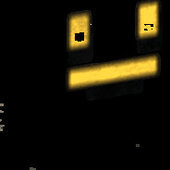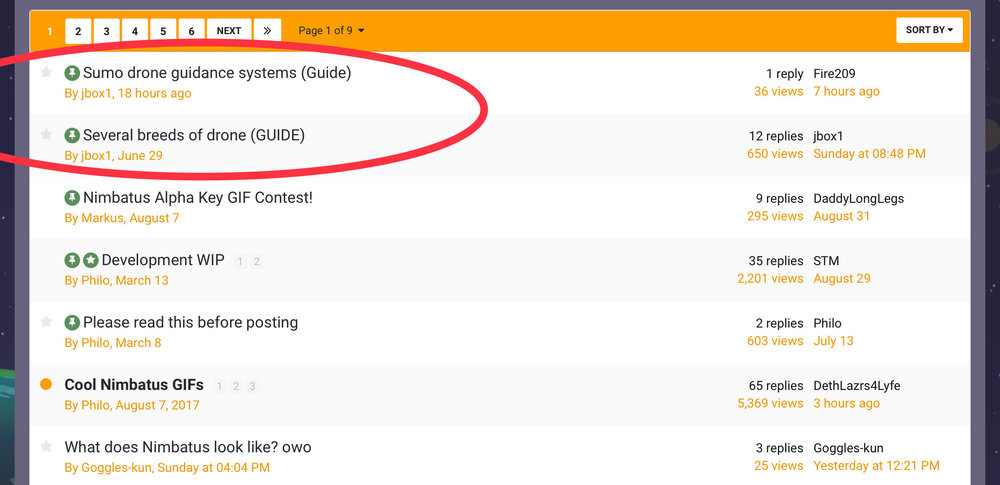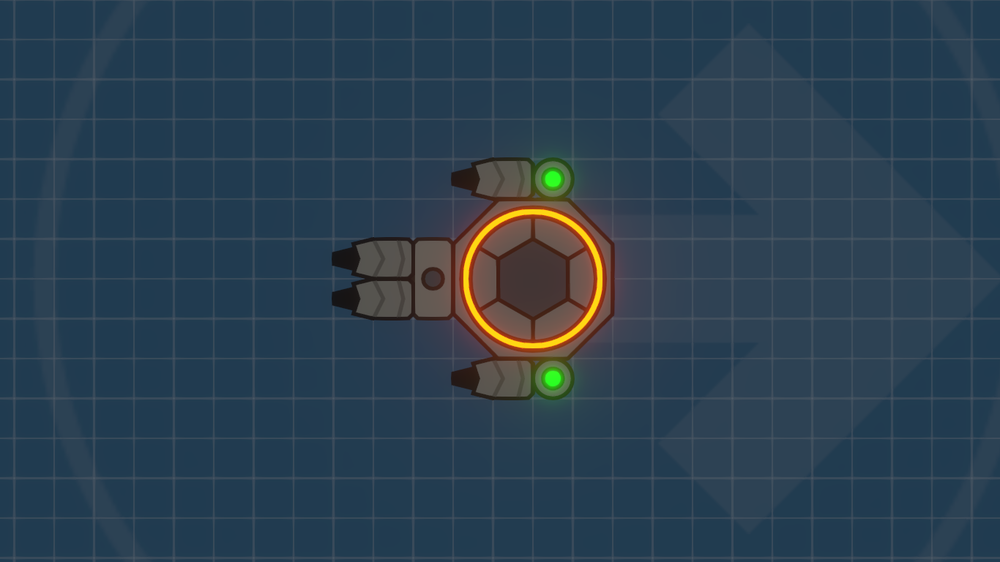-
Posts
129 -
Joined
-
Last visited
-
Days Won
3
Content Type
Profiles
Forums
Events
Everything posted by jbox1
-
Now, one of the questions I’ve been having about Nimbatus is what the Lore is, or the background story. For a while, I assumed there was no Lore, which I was complaining fine with. That was until the loading hints were introduced. One of the loading hints states that “The corp have placed transmitters on every planet to keep out competing factions”. What this means is that someone controls all these planets, and does not want you there. This also explains why there are transmitter effects. Whomever set up the transmitters did so to try and interfere with the operation of your drone, to try and deter you from completing your mission. This same person also presumably spams them cannon bois on bio planets because they don’t want you to get rid of their bio-waste. Don’t know why, because it’s disgusting. However, this also raises the question of why you’re completing these missions in the first place. It likely isn’t the person who owns the planet that’s asking you to perform these actions, as they clearly want you gone. What I believe is that you work for some government agency not dissimilar to the EPA. All of the missions so far have been to reduce the population of certain creatures, or remove bio-waste, and the mission hints suggest that this is for environmentally conscious reasons. So in conclusion, the Lore of Nimbatus is that you operate in territory controlled by another faction, to perform various actions to aid a government environmental sustainability agency of some kind,
-
In TF2 sniper voice ”G’day mate!”
-

Where we're going, we might need wheels.
jbox1 replied to Marker Mage's post in Drone Part Suggestions
Nice suggestion (and title!) -
Seems legit
-
It might just be me being nastulgic about the old demo build, but I believe that plasma ammunition should give a digging bonus. It sorta makes sense when you look at the color, and how when you used to start with a fixed plasma beam which was your digging laser. I believe that even today, the plasma ammunition should provide a digging bonus, so that you can really melt through terrain like a hot knife through butter.
- 1 reply
-
- 2
-

-
This idea is inspired by KSP’s fuel cells, which convert fuel into large amounts of power very quickly. This is essentially the same idea in Nimbatus. The fuel cell will consume a lot of fuel to give a quick boost of power, for firing a lot of weapons for a short period, or for emergency power when your other energy sources kick the bucket.
-
Don’t use anti aliasing on an intergrated GPU
-
So, here's a simple idea that would work quite well in the lore of the game. An autonomous mission is a varient of a standard mission, but no direct control of the drone is allowed. In lore, this can be explained by a jamming signal in operation (which can be stopped by destroying the transmitter), and therefore leaves your drone uncontrollable. The missions themselves will be simpler, to suit the fact that the drones must be autonomous. I just think this would be a fun design hurdle to try to beat, instead of just having to build a bigger drone.
- 1 reply
-
- 2
-

-
You forgot the 50 million cannons pointed at you
-
That looks like fun
-
Short answer: add filter gates! Long answer: a filter gate is a timing device, which will require its input to be active for a period of time before activating its output. It’s output shuts off as soon as it’s input does, however. This filter gate is just one of those things I would just really like to use, and along with the buffer gate, could help with timing devices.
-
If you need 200% to 300%, you certainly have a problem
-
And so I present several types of guidance systems for Nimbatus sumo drones! Also see my other guide for information about specific varieties of drone. Simple guidance systems Simple guidance systems are employed in more complicated designs, but can be perfectly practical on their own. If you're new to sumo drone design, start here. Unguided The unguided system is easily explained. The drone simply uses a button to activate all it's thrusters to go forward. Naturally, this is only seen on rammers, and is very rarely successful. Most modern drones are easily capable of compensating for this sort of system. A simple unguided drone, as it would be seen on a rammer. Directional guidance for steering Simple directional guidance uses a directional sensor, connected to the rotational thrusters of a craft. It usually suffices most drones, and can be used both offensively and defensively. A simple directional guidance system allows the drone to turn to find the center of the arena. It is less than idea for center seeker drones, and is much more at home in rammer or pusher drones. Distance guidance for steering Simple distance guidance uses distance sensors to sense opposing craft, and turn towards them. It was very common during the Nimbatus demo, but has fallen out of favor to much simpler directional sensor systems, once they were available. They are also often prone to issues when used versus multi-drone classes, where mini drones could give false directions on the direction sensors. Directional guidance for detection Despite being used for directional guidance, directional sensors can also perform the role of a distance sensor. The directional sensor can be set up in a way that it has a very large tolerance range, and that it outputs for only a small fraction of it's area. This can then be used to determine whether a target is in a key position, such as whether a sumo enemy is in front of them. This can be advantageous for many reasons. Directional guidance for detection also lacks any of the downfalls of distance guidance, and cannot be confused by multi-drone setups. Distance guidance for detection Distance sensors are often employed on pusher drones to dictate whether a target is in front of it, and whether it should trigger it's thrusters to ram it. This system is mostly foolproof, but has some key issues. The distance sensor can be triggered by mini-drones if the opponent is a multi-drone, and also has a very limited field of view, in a straight line only. As such, it has fallen out of favor to much more reliable directional guidance systems. Specialist Guidance Systems Micha-guidance Micha-guidance uses two directional sensors on each axis of the drone. The direction of the axis will dictate the direction to the drones target. Since it is omnidirectional, it works well for center seeker drones and spinners. Especially spinners, which rely on constantly changing direction, where conventional directional guidance systems would simply fail. It is named after Nimbatus developer Micha, who had used the guidance system in one of his own sumo drone challengers. A simple Micha-guidance center seeker drone. It can very happily move in any direction towards it's target, regardless of orientation. Glider guidance Glider guidance uses the arena wall to help it skim along the arena edge. It uses a directional sensor to keep itself pointed towards the center, and a direction sensor to detect the arena edge, to then boost it away from it. A simple glider guidance system at work. Think I forgot something? Want to contribute? Share your drone designs and guidance systems below!
-
This could practically replace my entire guide
-
P.S. Don't use "owo" in your post title if you want people to take you seriously.
-
It runs on my potato, so it should do I can play with moderate frames, about 20-40FPS, and my PC stats are as follow: - 2.5GHz dual core - 4GB ram - Intel HD graphics (rip me) It's challenging as of the moment, but it's also very relaxing. It'll take a lot of work to git gud though, and the learning curve has been taking a bit of a hike in the recent updates.
-
Updated the guide with the spinner drone, because we all love spinners, right?
-
That was me btw although seriously, spinners are absolute cancer
-
Short answer: Make parts spread heat! Long answer: One of the problems one can have, with the new heating system, is that heat doesn't disapate (easily) between parts. This can be troublesome, and even with a heater or cooler, it can be difficult to maintain consistent temperatures around a drone. Even if the front part of the drone is overheating, should you activate the cooler, you may end up freezing other parts. My solution is a radiator part. The radiator does not create or destroy heat, but instead transfers it around parts. Parts near a radiator will attempt to change to the temperature of the radiator, while the radiator will attempt to change to the temperature of the surrounding parts. This will cause the temperature differences to quickly even out over a large drone.
-
Short answer: Add ping thingies on the minimap Long answer: So, I was playing around with Nimbatus when I had this quick idea for an idea/addition part. What this part does, is that it adds a node to the minimap, when given the instruction to. The node will show it's location on the minimap, and can also be the target of directional sensors. But! It will also have some neat tricks up it's sleeve! The node can have it's icon changed in the editor, to help relay specific information, such as whether the node represents a certain type of drone, or it's situation. The node can also have it's color changed (like LEDs), which will be reflected on the minimap. The node can also be "pinged", where it will show an outline of the node expand over the minimap. This can be used to show a specific alert from the node. This will be useful for players using autonomous multidrone systems, especially now with the printer, so they can easily see the status of their drones without having to complicate things with cameras.
-
I run a Cosmoteer mod with 6000+ downloads beat that.






